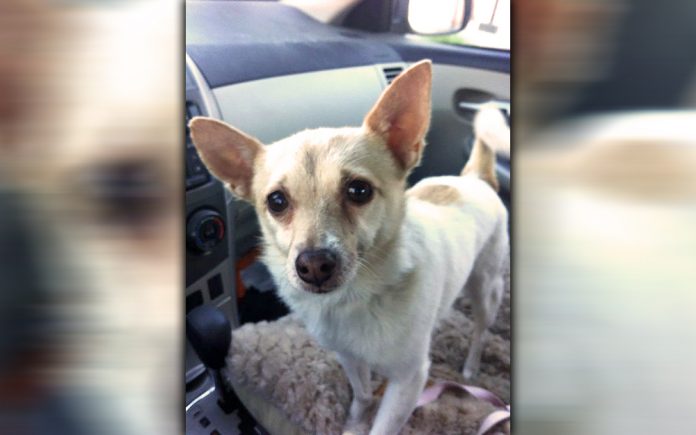
By Janet McAfee
I adopted my dog Scarlet O’Hara from the Coachella Valley Animal Campus in 2009, and learned she was rescued in a raid by county animal control. She was in a so called “rescue” in Hemet called Best Buddies. There were 240 small dogs inside the home, and they were rarely let outside to relieve themselves.
Back then I didn’t know any of the local wonderful trainers, and it took almost a year to completely housetrain Scarlet. Scarlet preferred luxurious locations, squatting just inside the door at Between the Sheets, a high-end shop on El Paseo street in Palm Desert. Finally, a baby gate and a tiled floor bathroom did the trick when I was at work. A dog rarely goes inside a small space which becomes their “den”.
 Here are a few things I’ve learned after rescuing and rehoming thousands of homeless dogs. Puppies need to relieve themselves more frequently (just like human babies!). They need to be taken outdoors at least 5 to 8 times a day. Large size dogs, even those who were “outdoor only” in their first home, usually become house trained after one or no accidents indoors. Select a dog that fits your home and lifestyle. You can easily teach your dog to relieve himself outside by keeping a close eye, recognizing his signals, and rewarding his good behavior.
Here are a few things I’ve learned after rescuing and rehoming thousands of homeless dogs. Puppies need to relieve themselves more frequently (just like human babies!). They need to be taken outdoors at least 5 to 8 times a day. Large size dogs, even those who were “outdoor only” in their first home, usually become house trained after one or no accidents indoors. Select a dog that fits your home and lifestyle. You can easily teach your dog to relieve himself outside by keeping a close eye, recognizing his signals, and rewarding his good behavior.
- Don’t allow a new pet to wander unsupervised throughout your home. Keep him confined to a small area when you can’t closely observe him.
- When he sniffs the ground or circles around, quickly and calmly take him outdoors. Try to have several spots in your yard where you like him to eliminate.
- Be consistent. Feed your dog a measured amount of food at the same times daily. Pick up the bowl when he stops eating or walks away.
- Most dogs, especially puppies, eliminate after eating, drinking, playing, resting, sleeping, or being confined. Five to thirty minutes after these activities, take them outdoors to your yard or for a walk outside if you have no yard.
- Use a verbal cue such as “Go Potty” to associate your dog’s brain with elimination.
- Quietly praise your dog when he begins to go.
- As soon as he completes the job, enthusiastically praise him, pet him, and reward with a food treat immediately.
- Once your pup gets into the routine, reward with praise “Good girl”, and give treats only intermittently.
- Since you cannot watch your new dog every minute indoors, put him on a 6-8 foot leash and hook the handle underneath a heavy chair leg. He won’t go in his immediate area.
- If your dog has an accident inside the home, DO NOT scold the dog but rather quietly cleanup and deodorize the soiled area. This will teach him to hide and eliminate when you are not present.
- There is lots of house training advice online. Common sense tells us, let him go outside first thing in the morning and last thing at night.
- Puppy pads may work as a last resort for a young puppy. Put a dab of urine on the pad to help him make the connection.
- If your house trained pooch suddenly has lots of accidents indoors, there may be a medical reason such as a urinary tract infection. Please schedule a vet visit.
Local dog trainer Valerie Masi with Best Paw Forward advises, “Crate training is one of the best ways to potty train your puppy. The crate helps train the puppy to hold it till he goes outside. Set a feeding schedule for the same time each day. This helps your pup develop a potty schedule. Consistency is the key to success!” Make sure your crate is large enough for your dog to stand up and turn around comfortably. Do not crate a dog for more than 3-4 hours during the day. At first you may need to crate him overnight but keep him crated nearby in your bedroom. Dogs love being close to their humans.
You can contact Valerie Masi at (760) 885-9450 for dog training classes that address potty training and help your dog acquire other great behaviors. A well trained dog is a happy dog!










































